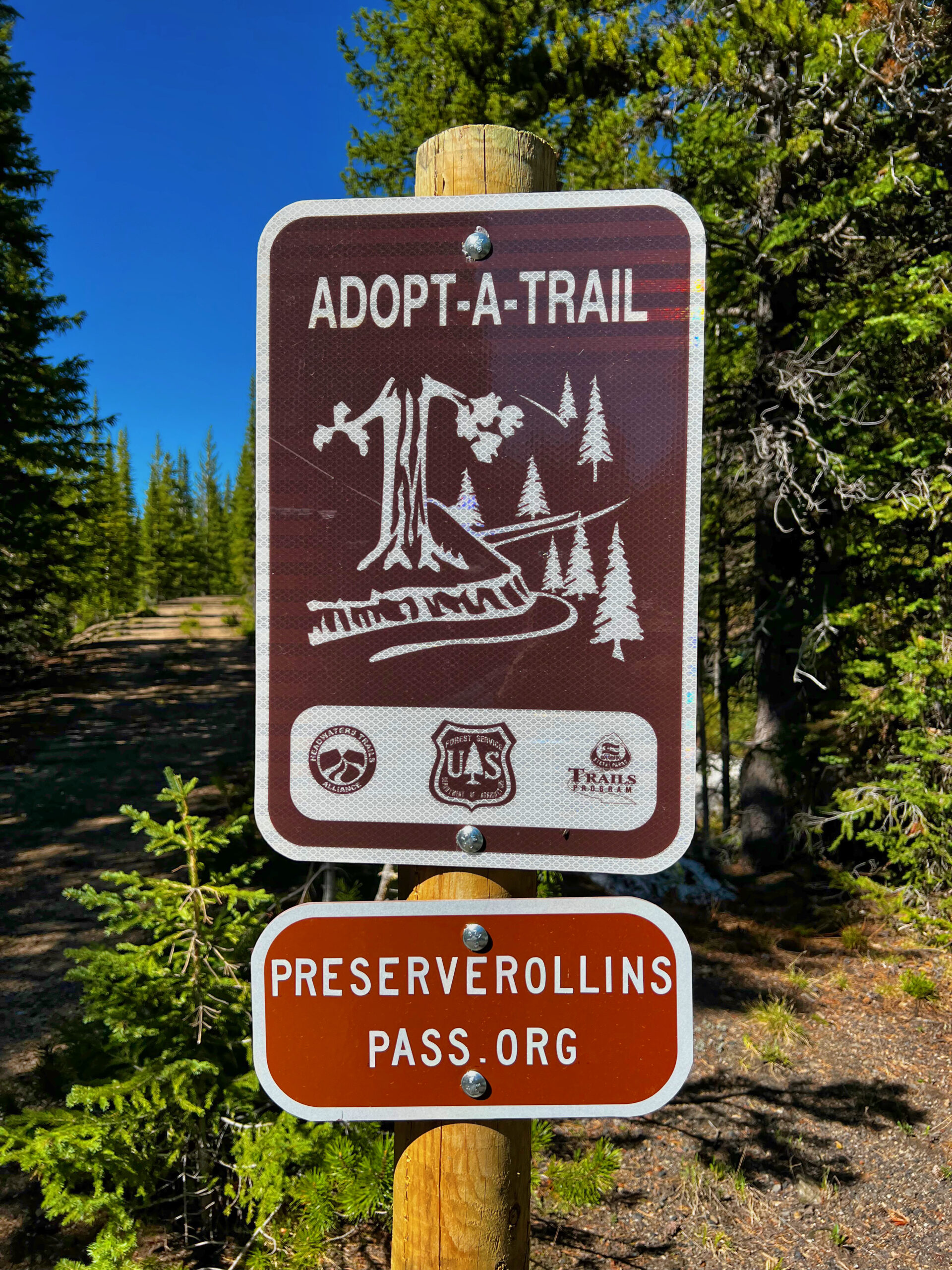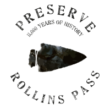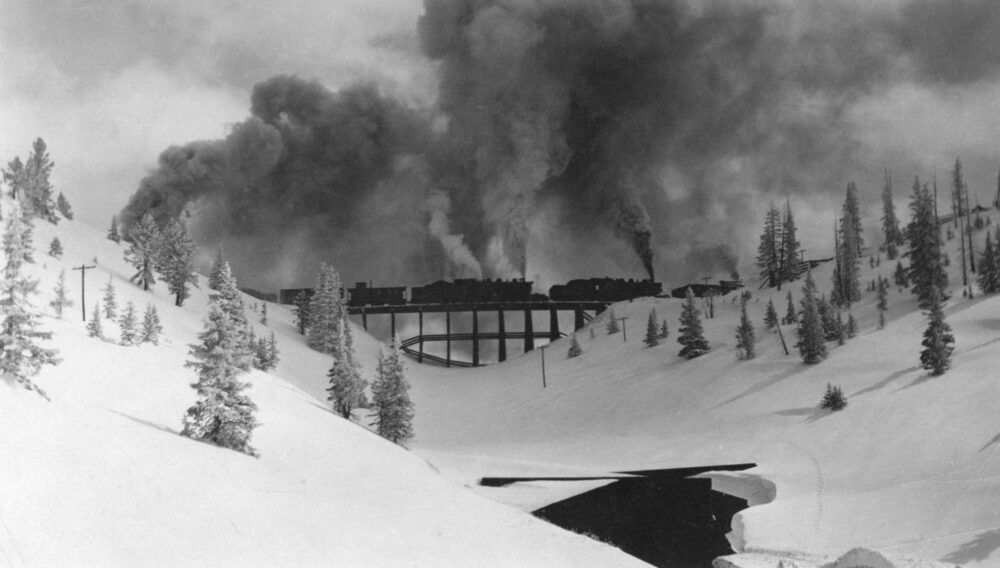Trail Adopters
Kate and Travis serve as award-winning trail adopters and route historians for Rollins Pass. Please join us as we actively preserve the history and legacy of Rollins Pass.
N76 TRAIL ADOPTION
Since 2016, we’ve participated in helping preserve the Rollins Pass story by serving as trail adopters of N76, a 1.73 mile Class 2 Trail known as Riflesight (named for the famed Riflesight Notch Trestle), on the west side of Rollins Pass. The trail is part of the Adopt-A-Trail Program (AATP) administered under the auspices of Headwaters Trails Alliance (HTA) and the United States Forest Service (USFS)—all work is done on a volunteer basis. For their efforts in 2023, the Wrights received the Partner of the Year award from Headwaters Trails Alliance.
The Riflesight Trail, while open to bicycles and hikers, is closed to all forms of motor vehicle traffic. Per Stay the Trail Colorado, Motor Vehicle Use Maps (MVUMs) are the legal trails you can recreate on—anything off that is out-of-bounds. Please abide by these limitations for the benefit of our continued access.
Parking at the trailhead is exceptionally limited (2 vehicles maximum—although 4 vehicles may be possible if a larger group is travelling together in multiple vehicles and could “block” in the first vehicle). Per the US Forest Service, please don’t block gates, “make sure to pull fully off roads, even gated closed roads, to ensure you don’t limit service and emergency access.” A recent scenario proving the importance of not blocking gates was in July 2021 at the trailhead to N76; a lightning strike started a forest fire and emergency crews needed urgent access to this part of Rollins Pass. Thankfully, the rapid response ensured the fire was contained and extinguished at just a quarter-acre in size.
The trail skirts the edge of timberline at 10,600-10,950 feet in elevation and follows the original railroad grade—the width is perfect for walking next to a hiking partner. If you’d like to pitch in to help or would like to keep us company while discussing the 12,000 years of history on the pass, please contact us!
TYPICAL TRAIL SEASON INFORMATION
SUMMER/AUTUMN
The trail is mostly hikeable beginning the last week in June—however, there are some sizable snowdrifts that must be crossed. N76 is fully clear of snow by the second week in July. As the trail is mostly shaded in the afternoons, it typically holds any snow received after mid-September and becomes hard to hike without snowshoes following substantial snowfall. Please note that while this trail is close in proximity to the town of Winter Park, due to terrain, cellular coverage is extremely limited.
WINTER/SPRING
Snowmobile use is permitted when snow depth is 12″ or greater—however, the trail is not groomed and avalanches have occurred on this trail historically, with enough force to derail multiple rail cars.

ROUTE HISTORIANS
FJÄLLRÄVEN CLASSIC USA
For the past several years, we’ve served as the Rollins Pass route historians for the 30.5 mile course comprising Fjällräven Classic USA. From Fjällräven, “The first Fjällräven Classic was held in 2005 and brought together 152 participants. The idea then, as now, was to wander in uncharted territory, over grand vistas framed by glacier-covered peaks and studded with sparkling lakes. But importantly, it was an opportunity to share the experience and the sense of freedom that comes with it with other trekkers. By taking care of all the logistics, like food, transport and safety, participants could focus fully on the trekking experience. The event was a success and during the following years, the idea was born to spread Fjällräven Classic to other places around the globe. After all, northern Swedish Lapland is quite far away for a lot of people.” As a result, you can now find Fjällräven Classic in Denmark, Sweden, UK, Chile, Germany, South Korea, and USA too.
INDIAN PEAKS TRAVERSE
We’re providing route history for Segment 4 and Segment 5 to the Indian Peaks Traverse team as they seek to utilize Rollins Pass as a crossing over the Continental Divide for their 66-mile hiking and mountain biking trail that meanders from Boulder over the Rocky Mountains and into Winter Park.
The primary purpose of our work is to inform the public.

